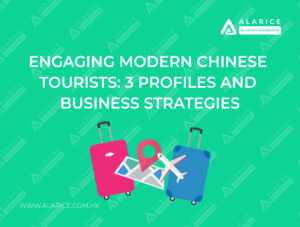NFTs are any digital item (like images, audio files, videos, etc.) that are unique and can’t ever be replaced with something else. Blockchain technology, which is used by cryptocurrencies, keeps track of who’s holding and trading NFTs.
In China, NFTs go by another name: digital collectibles. Digital collectibles are such a big deal in China due to the rise of cryptocurrency and the metaverse.
In fact, global interest in NFT has in fact surpassed the cryptocurrency market in 2021, and Google Trends reveal that China is the top country in NFT or digital collectible searches. The popularity of NFT marketing is a powerful tool to use in the metaverse arena of commerce, and it is especially effective to digital natives like Gen Zs and Millennials.
In 2021 alone, digital collectibles are estimated to be around 150 million RMB and could grow to 29.5 billion RMB by 2026.

In today’s age, it is important for brands to consider and pay attention to emerging trends in marketing like using NFT/digital collectible marketing to stay relevant with an increasingly digitalized target audience. An increasing number of brands, even luxury ones, are using NFT/digital collectible marketing to highlight their products in the metaverse.
Godiva, the Belgian-based luxury chocolate brand, has introduced a Mid-Autumn-themed digital collectible with artist Zhao Hong. They released 10,000 unique units of the collection which depicts lover reunions, families, children under the moon, and Chinese lanterns – all inspired by Chinese culture.
Godiva released the collection as a nod to the brand’s special offerings during the festival, heightening the hype around their brand. They have even built a GODIVAVERSE where these virtual creations can be accessed and viewed through WeChat.

Source: Godiva Wechat official account
Not only that, but they are also beginning to break ground with the crypto-dominated crowd in China by leveraging metaverse and NFT concepts in their marketing. Understanding digital collectibles in context of the Chinese metaverse, what works and what doesn’t, will help brands create a successful marketing strategy for their products in China.
Here’s what you should know about NFTs and Digital Collectibles in China for your brand’s marketing strategy:
1. Brands Must Choose The Correct Trading Platform
China is the number one country for NFT searches according to Google Trends, but this is ironic since they use collectibles. The massive demand and market for NFTs or digital collectibles in China led to the establishment of numerous platforms that offer different collectibles. Leading tech companies invest in this new era, and they are not disappointed.
Brands need to know about the nature of these trading platforms, as they have different functions. Choosing the correct trading platform will give maximum brand exposure to their target consumer audience. As of 2021, there are 38 NFT/digital collectible platforms in China.
These are generally divided into tiers, and there are 8 platforms on the first tier, 6 on the second tier, and 25 on the third tier. The top-tier platform includes Artefact 3D models, Aerospace 3D models, Music, and Avatar collectibles. Middle-tier platforms are composed of those that entertain anime, games, sports, and DCCG (digital collectible card game) items. The bottom tier is for collectibles under painting, photography, e-sports, film, and other cultural items.
Platforms like Jingtan (Topnod), Huanhe, or NFTCN allow for digital collectibles according to their category. Jingtan does not allow explicit trading, but rather you can “gift” your collectibles 180 days after you made your purchase. This is to protect from speculative trading and preserve the worth of the collectible.
Huanhe is Tencent’s version of a digital collectible platform, and they work with brands, museums, and other artists. NFTCN is the only marketplace platform that allows for collectible trading, and they are integrated into the Ethereum network and therefore have international verification access.
Once your brand has a digital collectible, choosing the correct platform to release it in is crucial for your success. Brands need to identify what platform is best for their digital collectible if they are in music form, digital art, or are sports-inspired. The platform’s key audience will help your brand’s digital collectible target its intended consumer and carry it to other people.
2. Digital Collectibles Serves As Hype-builder for Younger Consumers
In this digital age, digital collectibles amplify the reach of brands. Most consumers are comfortable with the idea of digitalization, and to some extent, the potential of the metaverse is addicting and possibilities endless.
Thus, brands need to be reactive to the situation and cater their marketing insights accordingly. Launching NFTs and digital collectibles enhances a brand’s image and widens their audiences, as well as showing to the world that a brand is not left behind in the past but is actively participating in the future. Younger consumers are more often than not dynamic and trend-setters, and they appreciate brands that can keep up with them.
Even Alibaba’s e-commerce empire, Tmall, has launched a mobile app specifically for digital collectibles, signifying the increasing Chinese NFT boom. 40 brands that total more than 50 digital collections have debuted on Tmall’s digital platform. These brands include luxury brands like Burberry, PUMA, and Versace. In order to drive more hype, they are also launching a blind box-style strategy to attract more people.
Source: zhuanlan.zhihu.com
Another example of brands and even restaurants using digital collectibles as hype-builder is Häagen-Dazs’s “Mid-Autumn Festival” themed digital collections. These were partnered with real moon cakes and brought together technology and tradition to the table. Eleme, an online food delivery service platform, has teamed up with a Guangzhou restaurant and sold 10,000 digital copies of “China’s first Cantonese-style digital mooncake”.
Brands can learn from Häagen-Dazs and Eleme to create their own themed collectibles for special promos, product launches, or special dates for the Chinese consumer. This will increase online buzz to its target consumer, especially those that are looking for new experiences and those that are entrenched in the metaverse.
3. Digital collectibles can sate consumer obsession with Chinese culture-inspired assets
Many of the top-priced digital collectibles in China are cultural or historical-themed items. Lingxi, JD’s blockchain-based platform, released digital collectibles that featured an antique Chinese embroidered screen from the Summer Palace of Beijing. Copies were limited to 8,000 only, and they were immediately sold out.
The consumer obsession with Chinese culture-inspired digital collectibles is especially strong with the younger generation. This is a way for them to understand the stories of history and culture better while simultaneously supporting the business and value of a brand.
Digital collectible investors find these cultural-themed collectibles endearing, and within the Chinese social landscape, they are widely accepted and have established “fan bases”. Linking a collectible with a cultural theme or historical significance means it needs less effort to market and resonates more with Chinese-centric consumers.
Additionally, the fandom economy is another reason why collectibles in China are very culture-based. For example, Jay Chou, a famous singer, promoted Phanta Bear, which is a joint project between his fashion brand (PHANTACi) and EzekClub. These Phanta Bears wore traditional Chinese attire and were sold for 33 ETH, compared to an average Phanta Bear that sold for 7.87 ETH, which was already 30x the original price.
Source: weibo.com
If a brand is looking to create digital collectibles, it is a safe bet to create something that is centered around Chinese values, culture, and history. This means less marketing as there is already established hype around it owing to the Chinese cultural element, and it is easier for consumers, regardless of age, to patronize it.
4. Digital collectibles can also be a brand’s online representation or product
Luxury brands are creating collectibles to serve as their “spokesperson” aside from being a direct NFT/digital collectible product. A successful example of this is Prada.
Prada announced a collaboration between them and Adidas Originals to launch a digital collectible project which they claimed was the first of its kind. It featured user-generated and creator-owned art, bringing together people from all over the fashion, design, and crypto markets.
Source: Prada official account on Weibo
This digital collectible model rewards the participation of the consumers, and it is completely free. This move by Prada and Adidas essentially cemented their presence in the Chinese metaverse world and served as their online representation.
Another NFT collaboration happened between luxury brand Balmain and Barbie. This collab produced three Barbie avatars clad in Balmain outfits. The NFT bids for the avatars are hovering around 2000 USD, but the real profit came from the real-life Balmain apparel and accessories inspired by the avatars. The real-world collection incorporated signature looks from Balmain and Barbie, which is a fusion of polished French aesthetics with bold American style.
On the opposite side, Louis Vuitton has decided not just to create a digital collectible but, instead, to produce a whole game. The game, called Louis the Game, was created in honor of Louis Vuitton’s 200th birthday, and it showcases the protagonist and virtual avatar Vivienne and her adventures through six different worlds.
Along the way, Vivienne collects candles (digital collectibles) that commemorate Louis Vuitton’s life. Some have even dubbed it as being better than Fortnite, and it has been downloaded more than two million times.
Brands, especially luxury ones, can create NFT collectibles to showcase brand representation and their products. Furthermore, as what Louis Vuitton made, they can also create new and exciting ways to interact with their target customers within the Metaverse using digital collectibles.
Source: LV official account on Weibo
Conclusion
Marketing in the digital age asks brands to be as adaptive as possible. With new technologies and the advent of the Metaverse, brands need to adjust their marketing strategies to remain relevant.
Today, NFTs and digital collectibles are not just for the crypto people, but they are starting to get adopted by the mainstream public. Chinese digital collections can be used to effectively market a brand to its target Chinese consumers by choosing the correct trading platform.
Aside from that, brands can also use them as hype-builder for their products or as their official virtual representation to cement their place in the metaverse. The best digital collectibles are those that are inspired by Chinese culture and have historical significance.
Create effective Chinese NFT/digital collectible marketing campaigns for your brand today with Alarice. We offer Chinese digital marketing, Chinese market insights, and trend analyses for all of your Chinese market needs. Alarice also offers real-time market insight and China strategy development, including how to leverage digital collectibles for your brand successfully. You can contact us at our website, or send us a message here.






